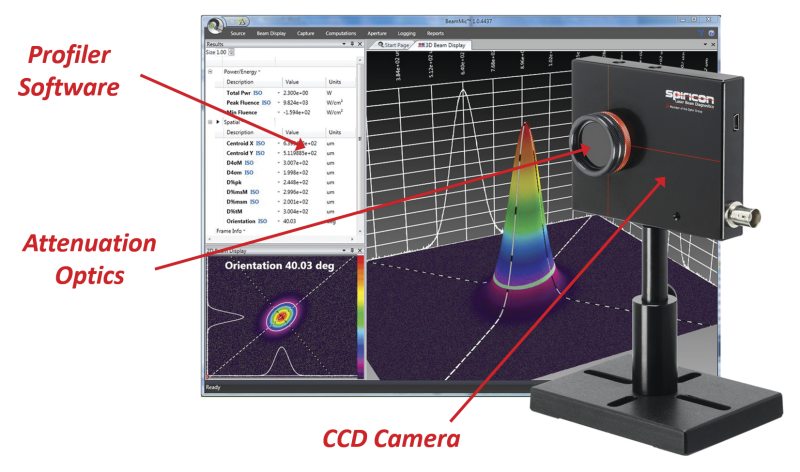Laser Beam Profile Measurement
Laser Beam Profile Measurement
Laser Beam Profile Measurement
The laser and application dictate the criteria for selecting the best beam profiler Criteria include laser wavelength, beam size, power, pulsed or CW, and how the profiler will be used. The wavelength dictates the type of sensor to be used with Si providing sensitivity in the VIS and NIR, Ge and InGaAs covering the NIR, and pyroelectrics covering the UV and IR. A profiler must have a large enough aperture to accommodate the size of the beam while smaller beams will be limited by the resolution of the profiler, i.e., pixel size for a camera-based profiler and slit size for a scanning profiler. Since every profiler has a sensor, they are susceptible to saturation and optical damage, which limits the allowable incident laser power. The power can be attenuated or reduced prior to reaching the sensor to accommodate higher powers while scanning slit profilers may not require attenuation since they only sample a small portion of the beam’s power. Generally, scanning aperture profilers are only effective for pulsed systems above 1-2 kHz due to their mechanical nature while camera profiles can be used for either pulsed or CW sources. Camera profilers provide a true two-dimensional image of the beam and will show fine structure and hot spots, which a scanning slit may integrate out. Slit-based profilers will typically provide a more accurate beam size measurement and can measure very small beams directly.

Camera-Based Profilers

Scanning Slit Profilers
A scanning profiler has several advantages over a camera profiler. Since only a single photodetector is employed, sensors with very different spectral sensitivities can be used, enabling profiling from UV to IR. A single detector also has a larger dynamic range compared to an array. Since the slit only allows a fraction of the beam to impinge on the detector, much higher powers can be measured without requiring additional attenuation. Because the slit plane is the measurement plane, it is also possible to measure the tightly focused beams with small spot sizes that cannot be directly measured with a camera. However, the scanning slit profiler only provides measurements along two orthogonal directions of a beam and therefore lacks the two-dimensional information available from a camera. Additionally, because the signal from the slit is integrated in one spatial dimension, the device is most appropriate for Gaussian-like laser beams. Due to the speed associated with the mechanical movement of the slit, the profiler can only measure CW and relatively high frequency pulsed beams. Beams with low pulse repetition rates, < 1 kHz, should be measured with a camera.

Related Topics
Optical Sensors
Beam Characterization